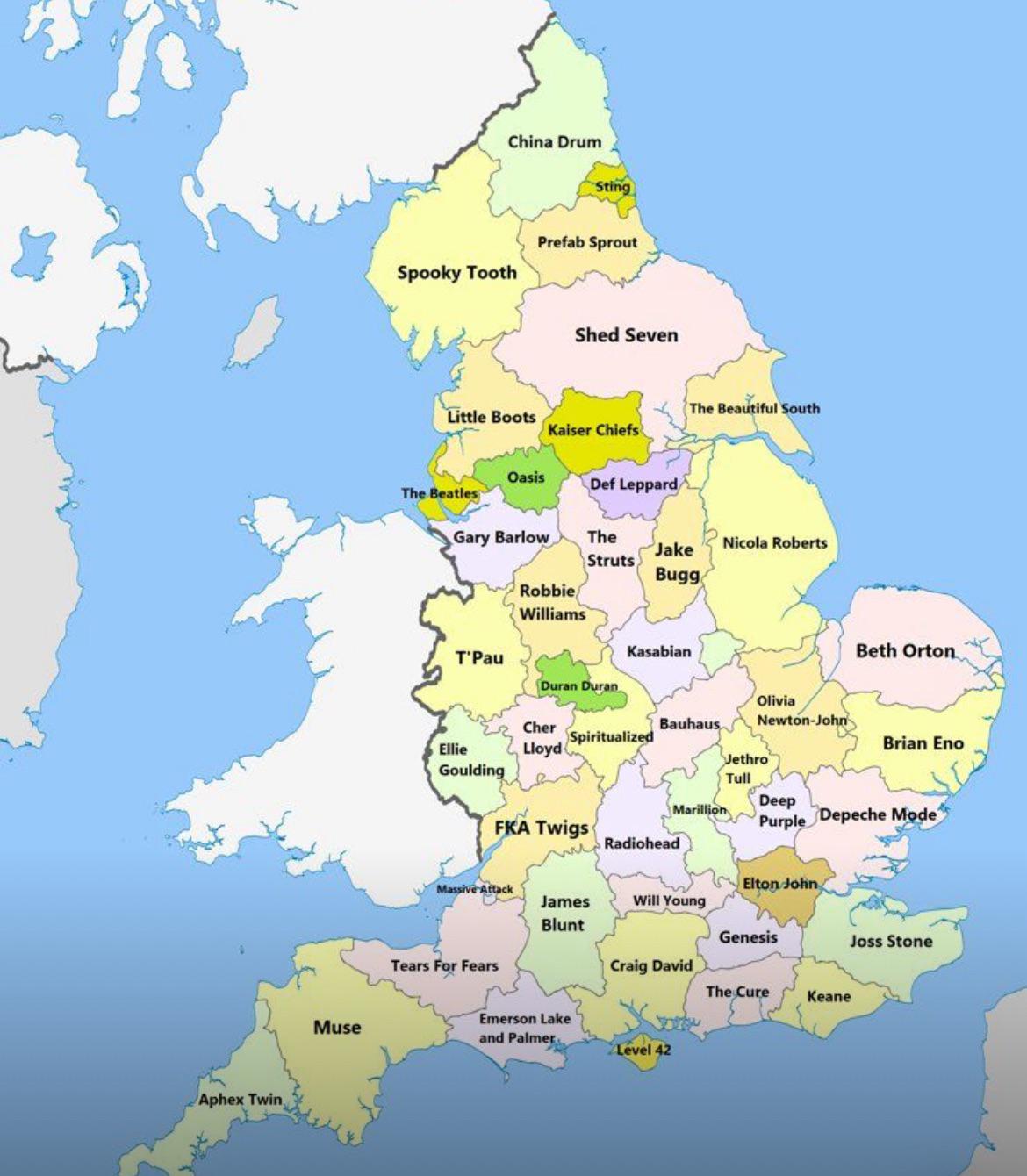Best Selling Artists by Regions Map


Alex Cartwright
Senior Cartographer & GIS Specialist
Alex Cartwright is a renowned cartographer and geographic information systems specialist with over 15 years of experience in spatial analysis and data...
Geographic Analysis
What This Map Shows
The "Best Selling Artists by Regions Map" provides a clear visualization of the music industry's landscape across different geographical areas. It highlights the top-selling musical artists unique to various regions, showcasing how cultural influences and local tastes shape the music scene. This map not only reflects sales data but also serves as a window into the diverse musical preferences that exist globally.
Deep Dive into Music Sales Trends
When we talk about music sales, we are delving into a complex interplay of cultural preferences, historical developments, and market dynamics. Music sales can be influenced by a variety of factors, including local genres, the popularity of streaming services, and even the socio-economic status of the regions in question. For instance, countries with a strong local music industry, such as South Korea with K-pop, tend to show higher sales figures for domestic artists. According to the International Federation of the Phonographic Industry (IFPI), global recorded music revenues reached $23.1 billion in 2020, and the market has continued to evolve rapidly with the rise of digital streaming platforms.
Interestingly, the music consumption patterns are not as straightforward as one might think. In regions like North America, the dominance of pop and hip-hop artists is evident, with figures showing that artists like Drake and Taylor Swift consistently rank among the best sellers. However, in Europe, there is a rich tapestry of genres, from the electronic beats of EDM in Central and Northern Europe to the folk traditions that still hold sway in countries like Ireland and Scotland.
Have you noticed how different regions resonate with specific musical styles? Latin America has seen a surge in reggaeton and Latin pop, fueled by artists such as Bad Bunny and J Balvin. These genres are not only popular locally but have also made significant inroads into the global market. As a result, Latin music has seen a remarkable increase in streaming numbers, with Spotify reporting a 100% year-on-year increase in streams of Latin music in recent years.
In Asia, the rise of J-Pop and K-Pop has revolutionized how music is consumed, with bands like BTS and Arashi breaking records and reaching audiences far beyond their home countries. The phenomenon of global fandoms illustrates how music can transcend cultural barriers, making the study of these sales trends an intriguing subject. In fact, K-Pop alone generated an estimated $5 billion in revenue for South Korea in 2019, illustrating the economic impact of music sales on a national level.
Regional Analysis
Breaking down the sales data by region reveals fascinating contrasts. In North America, pop and hip-hop dominate the charts, with a few notable exceptions like country music, which remains hugely popular in the southern states. The U.S. has a unique ability to propel artists to international fame, with figures like Beyoncé and Eminem topping global charts.
In Europe, the music landscape is more fragmented. The UK has produced globally recognized stars like Ed Sheeran and Adele, while France has its own vibrant scene with artists like Daft Punk and Christine and the Queens. Interestingly, in Eastern Europe, traditional folk music is seeing a resurgence, with artists incorporating modern elements to appeal to younger audiences.
In Latin America, the growth of genres like reggaeton and Latin trap has been astounding. Countries like Colombia and Puerto Rico have become hotbeds for these styles, with artists such as Shakira and Maluma leading the charge. The regional variations not only highlight musical diversity but also reflect deeper cultural narratives and historical contexts that shape these artists’ works.
Significance and Impact
Understanding the best-selling artists by region is about more than just numbers. It reveals insights into cultural identity and societal trends, as music often reflects the experiences and aspirations of a community. The impact of these artists can be seen in how they influence fashion, language, and even social movements. For example, the rise of female artists in hip-hop has challenged stereotypes and created new dialogues around gender and empowerment.
Moreover, as the music industry continues to adapt to the digital age, the dynamics of music consumption are changing rapidly. Streaming services have democratized music access, allowing independent artists to flourish while also reshaping revenue models. As we look toward the future, it will be interesting to see how these regional trends evolve, especially as globalization continues to blur the lines of cultural boundaries in the music industry. What does the next decade hold for our favorite artists and the music we love? Only time will tell, but one thing is certain: the music map will continue to change and expand in exciting ways.
Visualization Details
- Published
- August 18, 2025
- Views
- 96
Comments
Loading comments...